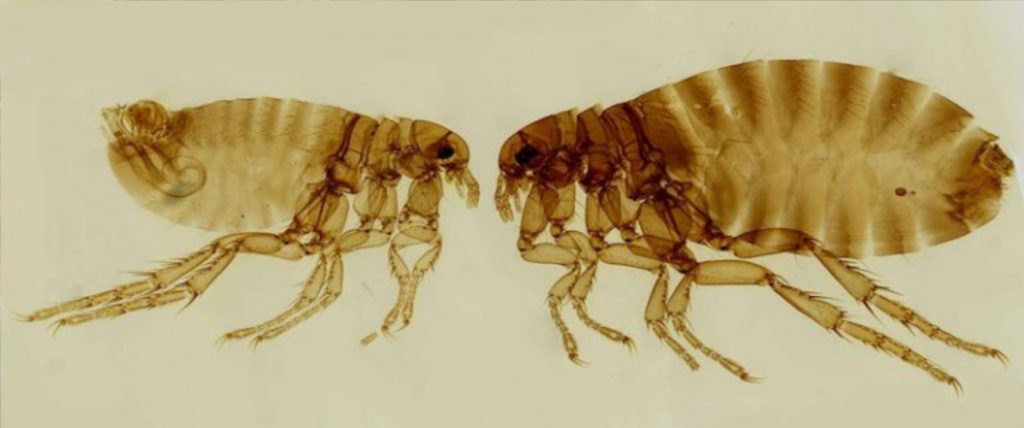
Fleas
Fleas are frequently encountered in homes and are common pests on domestic cats and dogs. Dog fleas look like cat fleas, but are rare in California. Sticktight fleas can become a problem when pets frequent areas near poultry. Female sticktight fleas firmly attach themselves around the ears and eyes of their host. Fleas on either cats or dogs in California are most likely cat fleas.
Adult fleas are very small insects, so it is difficult to see a number of the characteristics used to describe them. These reddish brown to black, wingless insects are compressed from side to side so that they look like they are walking “on edge.” They have piercing-sucking mouthparts through which they obtain blood meals from their hosts. Flea larvae are tiny, hairy, and wormlike with a distinct, brownish head, but no eyes or legs.
The cat flea is suspected of transmitting murine typhus to humans, but its primary importance is in its annoyance to people and pets. Cat fleas readily try to feed on almost any warm-blooded animal. Some people are bothered by the sensation of fleas walking on their skin, but bites are the major nuisance. Bites tend to be concentrated on the lower legs but can also occur on other parts of the body. The bite consists of a small, central red spot surrounded by a red halo, usually without excessive swelling. Flea bites usually cause minor itching but may become increasingly irritating to people with sensitive or reactive skin.
Some people and pets suffer from flea bite allergic dermatitis, characterized by intense itching, hair loss, reddening of the skin, and secondary infection. Just one bite may initiate an allergic reaction, and itching may persist up to 5 days after the bite. Cat fleas may also serve as intermediary hosts of dog tapeworms. Cats or dogs may acquire this intestinal parasite while grooming themselves by ingesting adult fleas that contain a cyst of the tapeworm.
